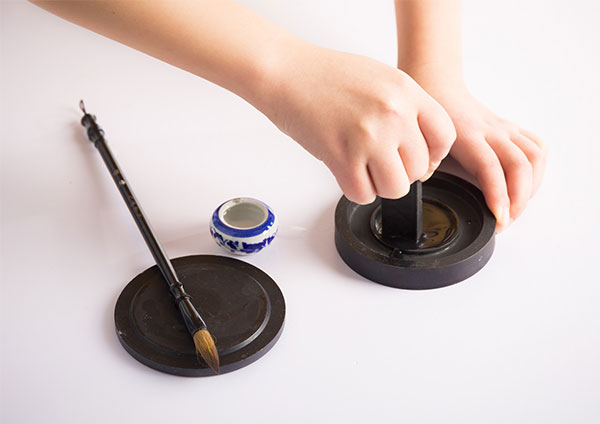The current situation of overseas calligraphy and its cultural diplomacy
Time 2019-11-12
The image of Chinese culture and art has been demonized in the West for a long time: "Yellow Peril", "China threat" and "China collapse". In the model of Cultural Cold War, some western countries contain the rise of China. What's more, the situation in the South China Sea and the East China Sea shows that the millennial "Chinese character cultural circle" has been eliminated in the process of "de Sinicization" for more than half a century, and "Chinese character cultural circle" has been replaced by "American cultural circle", which has resulted in China's repeated constraints of cultural soft power. Therefore, we should take a more active cultural attitude to spread Chinese culture overseas. In a word, while we are making great progress in cultural development, we should strive to export Chinese calligraphy culture overseas so that the world can understand China and understand China,
Appreciation of China makes it possible for Chinese culture and calligraphy to become more cosmopolitan.
Over the years, I have adhered to the overseas practice of cultural output after expounding the theory of cultural power and artistic innovation. It can be said that recent years should be my "year of cultural output": in addition to frequent visits to Japan, South Korea and Southeast Asia to spread Chinese calligraphy culture, I visited major cities in the UK in 2006 for cultural visits and calligraphy art exchanges for one month; in 2010, I gave lectures and calligraphy exhibitions on "Chinese culture and calligraphy spirit" in more than 20 universities and Confucius Institutes in the United States; in February 2011, I arrived in Germany France, Switzerland and the Czech Republic conducted cultural exchanges; in March 2011, they accepted the invitation of universities from Latin America, Cuba, Jamaica, Costa Rica and other countries to give lectures on "the beautiful spirit of Chinese culture", "Chinese culture and Chinese calligraphy", and held "Wang Yuechuan calligraphy art exhibition" in Latin America; in October 2011, they attended "Li Lanqing calligraphy and seal cutting Exhibition" in Indonesia ”He also gave a speech on Chinese culture and calligraphy spirit, and taught Indonesian students to write Chinese calligraphy; in November 2011, he went to London University to attend the international art and culture conference, and discussed the specific plan of holding the Chinese calligraphy mountain and Water Exhibition in the British Museum in 2012.
1. Spreading Chinese culture and calligraphy in American Universities
For a long time, western countries have been quite separated from Chinese calligraphy, which leads to the incommensurability of each other's cultures. At the invitation of more than a dozen universities in the United States, I went to the United States to give a one month lecture on "Chinese culture and calligraphy spirit". I will tour and give lectures on "Chinese cultural innovation and Chinese art spirit" and "China Art Spirit" in Universities in Washington, New York, Colombia, Atlanta, St. Louis, Kalamazoo, Minnesota, Chicago, Denver, San Francisco, etc Contemporary Enlightenment of calligraphy culture, Chinese culture and calligraphy art, etc. Universities touring the United States include: George Mason University, the University of Maryland, South Carolina Rolley State University, South Carolina presby University, kenniso State University, Georgia Calligraphy Association, Confucius Institute in Atlanta, emery University in Atlanta, Webster University, University of Michigan in West, and Princeton University and Columbia University. More than 20 lectures on culture and calligraphy have attracted the cultural attention and enthusiastic response of American universities, and American media have also followed up and reported on them.
In my speeches at American universities, I emphasized that culture is an endless process of spiritual and ecological creation. Chinese people's way of thinking is characterized by moderation, dialectical tolerance, contentment and humor. Chinese culture is a three harmony Civilization: family harmony, social harmony and the marginalization of Oriental culture of international peace.
After the speech, I began to help American college students write calligraphy. I found that American college students are very interested in Chinese calligraphy, but there are few teachers and textbooks. I try my best to explain the relationship between the development of Chinese characters and calligraphy to the students. Chinese calligraphy has gone through a long development stage from oracle bone inscriptions, gold inscriptions, seal script to cursive script, running script and regular script. The calligraphy style is enriched with the development of fonts. It also explains the basic skills of Chinese calligraphy, the different realms of Chinese calligraphy and so on, attracting a batch of college students and even doctoral students to join in calligraphy practice. At the University of Denver, I saw the calligraphy exhibition of American students held by the University. I was very pleased with its good level. At the same time, in my exchanges with American calligraphers, I feel that the advantages of overseas export of Chinese calligraphy culture lie in.
The significance of overseas communication of Chinese calligraphy lies in: firstly, calligraphy is the aesthetic writing embodiment of the historical and deep cultural significance of Chinese characters. This visual art can cross national boundaries, and it has a popular aesthetic characteristic for foreign students, spreading extremely fast; secondly, calligraphy is the meaning undertaker of the Chinese thought history subset, which will promote the rejuvenation and gradual globalization of Chinese calligraphy culture, Third, calligraphy is an important messenger of cultural exchange between China and foreign countries. With Confucius institutes all over the world and more than 70 million people studying Chinese all over the world, international communication of calligraphy is of great significance to China's cultural diplomacy.
I propose that in the new century, Chinese calligraphy should adhere to the spirit of sixteen characters: return to classics, enter the Wei and Jin Dynasties, keep innovation and keep the grand atmosphere. The image of a great country includes four aspects: economic image, political image, military image and cultural image. The economic image in China's image is brilliant, the political image is winning the trust of more and more countries, the military image is also rising and gaining recognition, but the cultural image is in a disadvantageous situation. It can be said that it is urgent to greatly enhance the soft power of Chinese culture and establish Chinese cultural strategy and national discourse.
2. cultural visits and calligraphy exhibitions in Europe and Latin America
After my visit to the United States, I flew to Germany, France, Switzerland and the Czech Republic in Europe for cultural visits and planning book exhibitions. After that, I transferred from Spain to three Latin American countries - Cuba, Jamaica and Costa Rica for visits, academic lectures and Wang Yuechuan calligraphy exhibition.
In Havana University, Cuba, I gave a speech on the beautiful spirit of Chinese culture and calligraphy. I believe that "orientalization of western culture" and "globalization of Chinese culture" are the two most important grand projects for Chinese scholars and even outstanding human scholars in the 21st century. It taught the new concept of Chinese culture and calligraphy, and let the young eyes of the West look back on the footprints of Chinese culture. Compared with other ancient civilizations, Chinese civilization is the most complete in the whole world, and calligraphy is the most complete work of Chinese civilization. During the "Wang Yuechuan calligraphy exhibition" held in the lobby of the Central Library of Havana University, some of my new ideas in theory and aesthetic spirit in calligraphy attracted great attention of college students to Chinese culture.
In Jamaica, "Wang Yuechuan calligraphy exhibition" was held by Mona branch of University of West India and Jamaica college respectively. After that, I flew to Costa Rica to meet with the president of Costa Rica University, held a speech on "listening to each other in cultural and artistic exchanges between China and the west" at the Confucius Institute in Costa Rica and held "Wang Yuechuan calligraphy exhibition". In the face of the very warm scene, the warm response of master Ge Sheng to the art of Chinese calligraphy, and many questions full of interest in Chinese culture and Chinese calligraphy, I try to interpret the cultural spirit of Chinese calligraphy from the aspects of technology, system, ideology and value of culture. It emphasizes that Chinese culture and calligraphy should make their own voice in a diversified global context.
In the recent two months' visit to Europe and the United States, I deeply felt and found that the interest of the West in the differentiated Chinese culture and calligraphy art is growing day by day. People in western countries are also keen to talk about China and Chinese culture, pay attention to the development process of China, eager to understand the basic value of Chinese culture, and discover the mystery of China's rapid development. Chinese Calligraphers should also embark on the cultural journey of calligraphy international dialogue when the cultural journey of dialogue and listening between China and the West has already arrived!
3. Go to Indonesia to participate in Li Lanqing's seal cutting calligraphy exhibition and hold calligraphy training class
"China seal · Li Lanqing seal cutting calligraphy art exhibition" opened at the National Museum of Indonesia on the evening of October 6, 2011. I was invited to join the exhibition. At the invitation of the Cultural Office of the Chinese Embassy in Indonesia, the headquarters of Hanban / Confucius Institute and the University of alaza in Indonesia, I carried out "calligraphy art training and lectures", attracting students and many calligraphy lovers from Confucius Institutes in Jakarta, Bandung and other places. In the experience part, I show and introduce the four treasures of the study to you in kind. Starting from teaching you the correct writing method and sitting posture, and taking the word "Yong" as an example, I teach students how to use the brush to write the basic strokes of "point, horizontal, vertical, hook, lifting, skimming and pressing". At last, the college students began to practice writing carefully, drawing red, imitating calligraphy, or simply writing a few words they like, some of which wrote "China and India are good", some wrote "love peace", and some chose to practice their Chinese names. Hundreds of Indonesian doctoral students were immersed in the joy of experiencing Chinese calligraphy.
This activity shows the charm of Chinese traditional calligraphy culture, helps Indonesian friends to appreciate Chinese culture and art, provides a platform for people of all countries to learn Chinese and understand Chinese culture, and strengthens the bridge of friendship and cooperation between Chinese people and Indonesian people. In today's world of multi polarization, Chinese calligraphy can't save the world in the agitation of history and contemporary, Eastern and Western culture, but as an important part of Chinese cultural spirit, it can "turn swords into silk" through the soft power of cultural dialogue. There is a long way to go for literati with great mind and forward-looking wisdom. Chinese culture should be actively exported to overseas countries, so that Chinese culture can regain its cultural charm and soft power in the world.
4. Attend art international forum at University of London
From November 4 to 5, 2011, a dialogue on the relationship between Chinese landscape, calligraphy and other arts in the world was held at the school of Asia and Africa, University of London. The event is hosted by the Asian African College of London University, the China Art Museum and the London Asian art week. Art historians, critics, curators and artists from China, Europe and the United States held seminars and gave wonderful speeches.
I made the keynote speech of the forum, and explained the trend of contemporary Chinese Art: the world significance of Chinese painting and calligraphy culture, and how we can perfectly express calligraphy art in such a Chinese modern form. Among them, several points triggered a heated discussion at the conference: why does calligraphy seek from the west? But the west is divided into two kinds, the dividing line is relatively clear - Modern Europe and post-modern America. The result of searching for Europe has basically marginalized China. For example, the European easel oil painting has only 500 years, which has marginalized the paper media of China for more than 2000 years - Chinese painting and calligraphy. But now the second big problem is behavior art, installation calligraphy, collage art and dada art, some of which are related to consumerism and vulgar literature after they entered the United States from Europe
The combination of the two has marginalized the European easel oil painting, the aristocratic and classical culture and art.
The dilemma of Chinese calligraphy lies in: firstly, it is impossible for Chinese calligraphy to go back to ancient times; secondly, it has been marginalized by the West; thirdly, it has been ridiculed by cold humor and artistically performed by post-modernism. Chinese calligraphy can only be developed in the Chinese Center of dancing in shackles. In a strict sense, calligraphy is a beautiful and elegant writing that expresses deep cultural connotation through words.
During the conference, the University of London arranged me to write more than ten pieces of Chinese calligraphy in front of many Western experts and professors, which aroused their great interest and brought the heated discussion on Chinese calligraphy into the conference. After that, a group of experts visited the British Museum at the invitation of the University of London. I found that the location of Chinese calligraphy on display in the British Museum is very narrow. The only few pieces of calligraphy are inferior ones copied by copiers. I think this phenomenon of indifference should be paid attention to by the Chinese calligraphy circle. I believe that the trend of globalization of Chinese culture is irreversible. Western culture should learn to listen to and respect oriental culture and art.
下一篇:没有了


